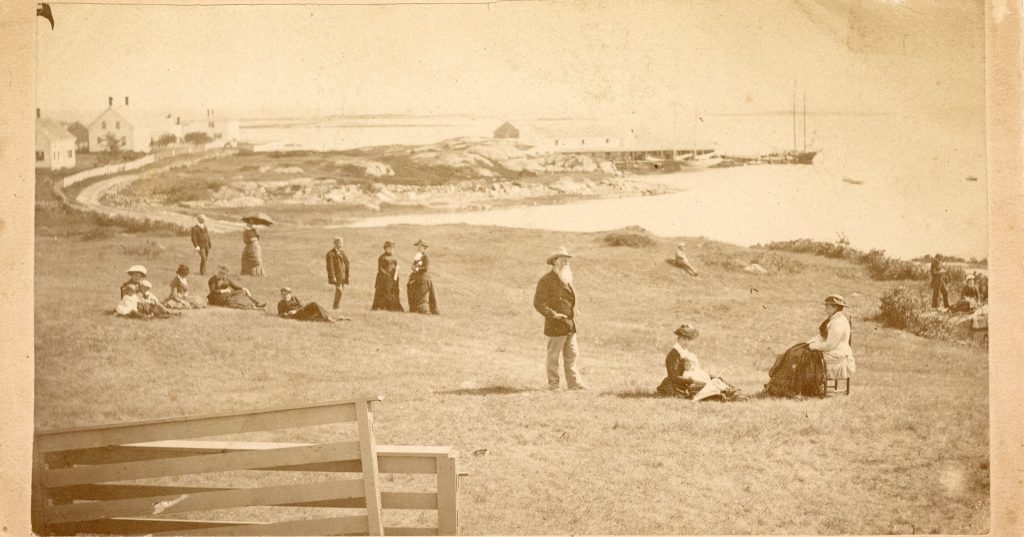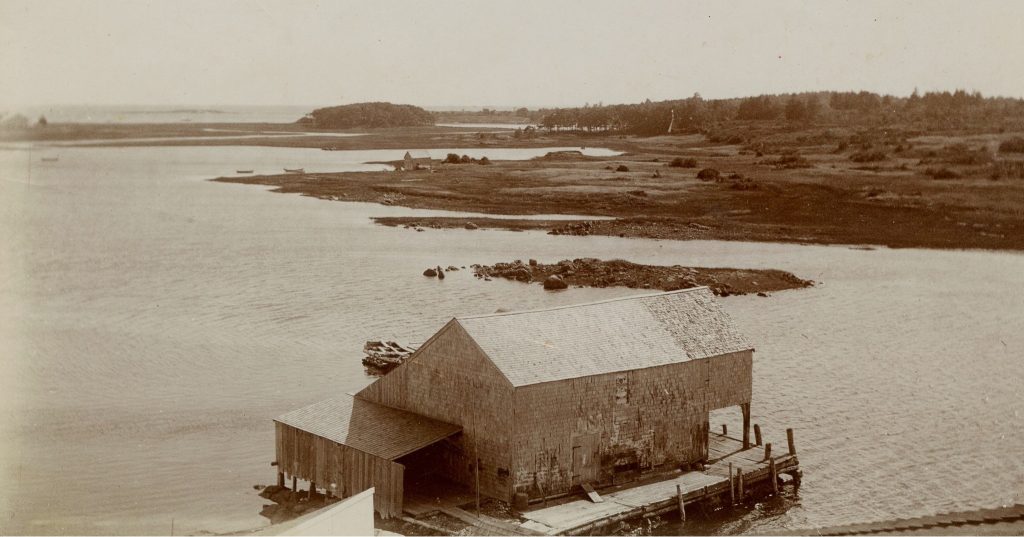Bickford Island Causeway
Work on the Pier Road Causeway Project has begun. The Town of Kennebunkport will elevate and rebuild the portion of Pier Road between Stone Haven Hill and Bickford Island where tidal flooding issues are increasingly impacting public access to the pier. But it won’t be the first time.
Bickford Island at Cape Porpoise was called Neck Island on early records. Andrew Brown bought the island from Thomas Perkins in 1766. The island was then called Brown’s Island. The Browns sold it to Adam McCulloch in 1793 and 12 years later, the McCullochs sold the island to John Bickford. It has been known as Bickford Island ever since.
In 1817, the town of Cape Porpoise canceled John Bickford’s highway tax for 7 years to compensate him for maintaining his road and BRIDGE to the mainland. George Bickford, presumably John’s son, owned land on the mainland side of the causeway. In 1837, the town accepted responsibility for the road and bridge from Israel Stone’s, to Bickford’s, to the wharf near Bickford’s store. Bickford’s bridge was updated in 1845 and 12 years later citizens voted that a sixteen-foot-wide stone bridge be built three feet higher than the present one, provided that the cost not exceed one thousand dollars. The causeway built in 1857 can be seen in the first picture that belongs to the Brick Store Museum.
Seth H. Pinkham bought Bickford Island before the Civil War. He extended the wharf and began shipping 100-pound bundles of fish to Gloucester and Boston. In 1897, his son, Winfred, sold the island to the Cape Porpoise Land Company. They brought the Casino and Atlantic Shoreline Trolley to Bickford Island. Commercial fishermen were still using the wharf at the end of Langsford Road.






Leave a Reply